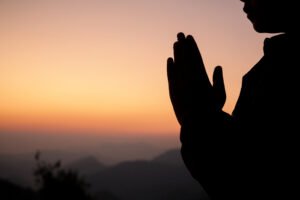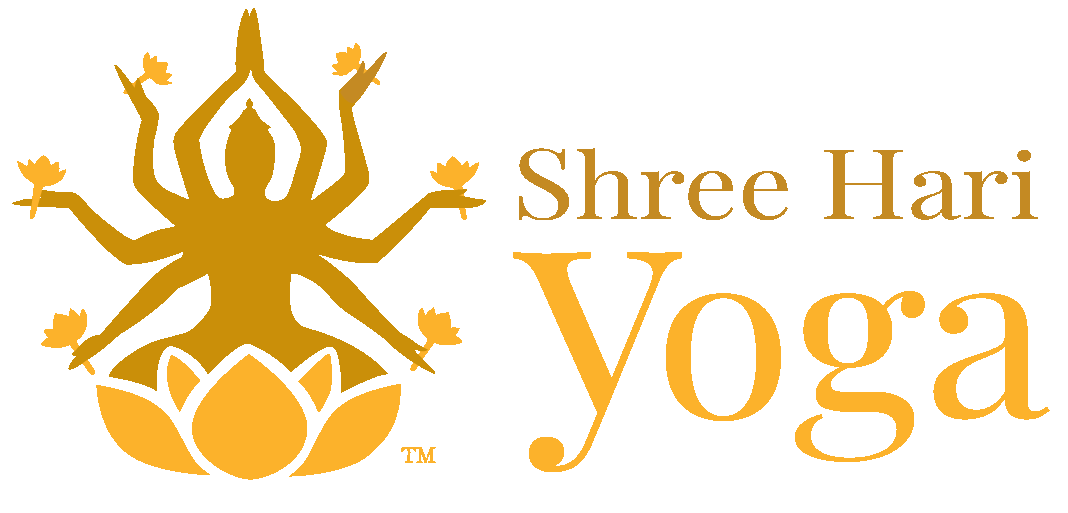All About Namaste (Meaning, Pronunciation, Effect, Yogic Importance And Much More)

Namaste is the very essence of Indian cultural and traditional interactions. Yes, we say Namaste, when we meet new people, while paying reverence to the gods and goddesses, and also while meditating. It is inseparable from our lives. The same happens in the yoga class. More often than not, you will notice your yoga teacher starting the class with a ‘Namaste’. It has come down from the Sanskrit texts, to be precise. This is a word, which is connected to so many revelations like devotion, prayer, and respect. So, in a yoga class, yogis also use this gesture to start and end the classes.
What Exactly Is The Namaste?
The hand gesture that we form, while saying Namaste is the Anjali mudra. It is a sign of reverence, union, and respect. Moreover, it is the easiest mudra that you can learn. Every child knows about this gesture from childhood. You have to bring both hands together, and then join the palms in front of the heart chakra. The fingers will point upwards, in this case. You have to start the Surya Namaskar with this mudra, as well.
You should have a clear idea, about how to take on this position, in the course of your yoga session. Sitting comfortably, no matter, which yoga poses, you are doing, is essential for all yogis. Your spine should be erect and lengthened. Slowly, join the palms of both the hands, into a ‘Namaste’. Your hands positioning should be exactly in front of the Anahata chakra. When you do this, all the awareness gets centred on the Heart chakra. You will often be guided to close your eyes, during this practice. This mainly helps in directing the flow of energy toward the Heart centre, in a more profound manner.
The Namaste has many other implications that you may not have realized. It is believed that, when you join the palms, you are actually aligning both the hemispheres of the brain. So, the co-ordination increases manifold. It also brings about the union of the Ida and Pingala nadis. You will get in-depth knowledge on such facets at the Rishikesh Yoga Teacher Training.
You have to pronounce the Namaste in this manner – NAH-muh-stay. Although, it is one of the most used symbols in our culture, no one really knows, where it actually came from. In many spiritual texts, you will find it is depicted by the ‘Om.’ Some yogis feel that it may be the sound of the universe.
Yogic Context Of Namaste
In the yoga class, this is one of the most used symbolisms. Many yoga teachers, no matter, Indian or not, will use this. It is basically a relational gesture to the Vedic texts. According to it, the symbolism is a part of the very existence. You are actually practicing yoga throughout your existence. To be exact, yoga is a divine amalgamation of not only the body, mind, and the soul, but your universal consciousness. It also connects all the humans.
When you join your hands in the Anjali mudra, and say ‘Namaste’, you are actually sending out vibrations. There is no physical contact, but myriad emotions arise out of the kriyas. Moreover, when your thumbs touch the Anahata chakra, divine energy flows from the heart to the fingers and out towards the person, whom you are greeting. Some of this energy is also re-directed towards the Ajna chakra.
Effects On Different Stages of Yoga
You will use ‘Namaste’, that is the Anjali mudra, during various asanas. Moreover, you may also use it during meditation. There are so many asanas, or postures, which unite so well with the Namaste. They are Tadasana, Vrikshasana, as well as Vajrasana. The effects and significance changes from one state to another. Let us find out more about the same.
- At the beginning of your yoga practice, it brings the energies in harmony with one another. Moreover, the influx of energies prepares the nerves and muscles to face tension. You will often practice deep breathing, which will also enhance the flow of blood within the circulatory system. It also helps in subsequent warmups.
- When you are holding any pose, then the significance of the ‘Namaste’ changes. It triggers many biological reactions as well. The mudra also opens up the entry points for a change of consciousness. So, you will be able to put the energy to good use.
- When you practice the same at the end of the yoga session, it helps in normalizing all the processes. When you are performing the asanas, the body, and mind go through a lot of turbulence. So, the ‘Namaste’ helps in normalizing everything. It mainly relaxes the nervous system and the body, in totality.
Some people, do have confusion about the positioning of the hands, during Namaste. You can practice the same, in front of different body parts. They are, in front of the forehead, in front of the throat, in front of the chest, and so on. Learned teachers at Shree Hari Yoga School can guide you to perfection.
Applying The Meaning To Daily Life
If you say and practice the mudra on a daily basis, you will notice many positive changes in your life. It can harness the power of awareness, when you do it in front of the forehead. There is a harmonious flow of divine energy towards your Ajna chakra, in such cases. You will be able to communicate better, with others. This happens, when you practice the mudra and say the word, with the placement, before your throat.
You can also apply it to cardiovascular and respiratory functioning. When you practice ‘Namaste’ in front of the breastbone, it improves your cardio functioning.
Ultimately, the very basis of the ‘Namaste’, is to balance the extremities. You can also attain a balance in the masculine and feminine energies, as a result. It is not necessary, that you have to bow down and say ‘Namaste’ to each and every person, whom you meet on the way. However, you can connect it with holiness and divine feeling. It also helps one to regard all others as equals.
